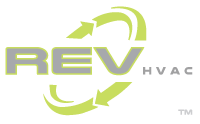
Thermal comfort in office spaces has been the topic of multiple research projects and studies in recent years. Read through to the end to learn interesting discoveries in this field, along with the magic recipe for improving thermal comfort!
As per ASHRAE Standard 55, the Predicted Mean Vote (PMV) model can be used to predict the percentage of people dissatisfied with the thermal comfort in an office environment. The thermal comfort is considered a success if 80% of occupants are comfortable in their office environment.
20% of employees feeling thermal discomfort is a success?
Is there a loss of productivity, and can we estimate the resulting cost?
Independent studies have been conducted over the years by various scientists, labs and universities, all demonstrating the tangible impact of thermal comfort on productivity.
In 2006, the Berkeley Lab, a U.S. Department of Energy National Laboratory managed by the University of California, completed a formal statistical analysis of 24 independent studies investigating the impact of temperature on performance. Although the study only targeted indoor air temperature, it concluded that:
“There is evidence that the effects of temperature on work performance, and the optimal temperature for performance, may vary substantially with type of work, climate, and clothing level, and that level of thermal comfort may be a better predictor of work performance than indoor air temperature. “
Other factors must be considered when assessing thermal comfort, such as the velocity of diffused air when it reaches occupants, and each individual’s tolerance of heat and cold.
Too Hot
According to a 2006 survey by recruitment consultants Office Angels and the UK trade union USDAW:
- 15% of workers argue over how hot or how cold the room should be;
- 81% of workers find it difficult to concentrate if the office temperature is higher than the norm;
- 62% of workers state that when they are too hot, they take up to 25% longer than usual to complete a task.
Too Cold
Cornell University found in a month-long study that when the office temperature increased from 68 to 77 degrees Fahrenheit, typing errors fell by 44 percent and typing output rose 150 percent.
150% output increase with 44% errors decrease = 216% Performance Improvement!
Simultaneously Too Hot AND Too Cold
The thermal comfort model that we use for temperature control was developed in the 1960s and based on the average 40-year-old male metabolism, overestimating female metabolism by up to 35% .
An article published in 2015 in Nature Climate Change, Energy Consumption in Buildings and Female Thermal Demand, reminds us that the empirical thermal comfort model that we use for temperature control was developed in the 1960s and based on the average 40-year-old male metabolism. These numbers overestimate female metabolism by up to 35%, and that difference in metabolism is the primary reason women almost always feel colder than men. Many blogs and articles have been published since then calling air conditioning ‘sexist’!
The truth is that metabolism varies with age, body fat and muscles, and is not just related to gender. Tolerance of heat and cold, as well as ideal temperature, varies for each individual and a one size fits all approach will never please everyone.
The article When the Office Gives You Chills published in The New York Times quotes Gail S. Brager, a building science professor in the architecture department at the University of California, Berkeley: “You’re almost set up to fail when you put a lot of people in a building and give them one temperature.”
As if it wasn’t enough, the average room temperature does not take into account other factors affecting specific locations in that room. The most common sources of temperature disruption are windows, heat-generating equipment and uneven air distribution creating air drafts and hot spots.
Clements-Croome (2003), in its paper Environmental Quality and The Productive Workplace, claims that “the way the building is managed through its FM provision can impact on occupier productivity”, and that “by improving the office environmental conditions, occupier productivity could be increased by 4-10%.”
A 10% productivity gain?
What would a 10% productivity gain represent, even if it only affected 20% of your employees? A 2% overall productivity gain, yes. But let’s evaluate it with real numbers.
If your office has 50 employees earning an average yearly salary of $50,000. Its total salary cost is $2,500,000 per year.
A 2% overall productivity gain as a result of improved thermal comfort equals $50,000 per year.
And we’re only considering reasonable thermal discomfort here. In more severe cases, employees may take sick days, and the employee turnover could increase dramatically.
Add full days of work and the cost of hiring and training new employees into the equation, and that productivity number can quickly grow from 2% to much higher percentages.
Is an 80% average comfort really the best solution? Can we improve it? How can we get some of that 20% back?
Our REV diffuser can help you do exactly that, by using a combination of global and local assessments which allow you to improve your thermal satisfaction ratio to well above 80%. In order to do that, we offer you our Magic Recipe! OK, OK! We admit it, there’s no magic involved. Quite the opposite, this is a surprisingly simple, yet very efficient 2-step approach:
1. Global comfort: reach an optimal average temperature to please 80% of your employees.
Achieve this the way you would normally do it: using temperature and ventilation control, zoning, etc.
2. Local comfort: adapt local air distribution to please employees within a short radius to bring the comfort ratio closer to 100%
The REV diffuser gives you the ability to make local adjustments like no other ceiling diffuser can. You are now able to respond to the complaints of the remaining 20% without affecting the other employees surrounding that diffuser. Those who were comfortable will remain comfortable.
The REV diffuser is the only commercial ceiling diffuser which allows for a full 360 degree adjustment of the airflow. Its four round sectors can rotate independently to supply more or less air toward specific people and objects.
The REV diffuser not only allows you to retain that extra $40,000 per year in extra productivity, it also lowers your operations and maintenance costs. How many complaints do you get per year? How much does it cost you to address each of these complaints?
To help you evaluate the cost, savings and return on investment of upgrading your ceiling diffusers with REV diffusers, we developed a simple online tool: ROI Calculator for the REV Diffuser in Office Spaces
Use this tool to discover how much this upgrade can put back on your bottom line. Some investments just make sense, and the REV diffuser in office spaces is certainly one of them.
Even the World Green Building Council encourages a conscientious approach to workplace thermal comfort:
“The method by which air is distributed through a space has a significant impact on energy consumption, thermal environment and indoor air quality.”
For more information about the REV diffuser, head to REV-HVAC.com
Important note: The REV Diffuser is made specifically for the retrofit market. To design a new office building from the start, you may want to consider EffectiV HVAC’s PLAY Diffuser instead. The PLAY comes with a full metal plenum and certified performance data for engineering designs.
References
World Green Building Council – How can we make offices more comfortable?: http://www.worldgbc.org/news-media/how-can-we-make-offices-more-comfortable
World Green Building Council – Green offices that keep staff healthy and happy are improving productivity & boosting businesses’ bottom line, finds report: http://www.worldgbc.org/news-media/green-offices-keep-staff-healthy-and-happy-are-improving-productivity-boosting-businesses
Berkeley Lab – Temperature and Office Work Performance: https://iaqscience.lbl.gov/performance-temp-office
Cornell University – Study links warm offices to fewer typing errors and higher productivity: http://www.news.cornell.edu/stories/2004/10/warm-offices-linked-fewer-typing-errors-higher-productivity
Sheffield Hallam University – HAYNES, Barry (2008). The impact of office comfort on productivity. Journal of Facilities Management: http://shura.shu.ac.uk/4593/1/Haynes__Impact_Office_Comfort_2008.pdf
Clements-Croome, D. (2003) “Environmental quality and the productive workplace”, CIBSE/ASHRAE Conference. Building Sustainability, Value and Profit. Edinburgh, Scotland (24-26 Sept): https://www.irbnet.de/daten/iconda/CIB1648 best weight loss diet pills.pdf
Nature Climate Change – Boris Kingma & Wouter van Marken Lichtenbelt (2015) – Energy consumption in buildings and female thermal demand: http://www.nature.com/nclimate/journal/v5/n12/full/nclimate2741.html
Energy and Buildings 36 (2004) 987–993 – R. Kosonen, F. Tan – Assessment of productivity loss in air-conditioned buildings using PMV index: http://www.sciencedirect.com/science/article/pii/S0378778804001835
CDC Workplace Safety and Health – Lighting, Indoor Environmental Quality Concerns, and Job Stress at a Call Center – California: http://www.cdc.gov/niosh/hhe/reports/pdfs/2012-0081-3169.pdf




